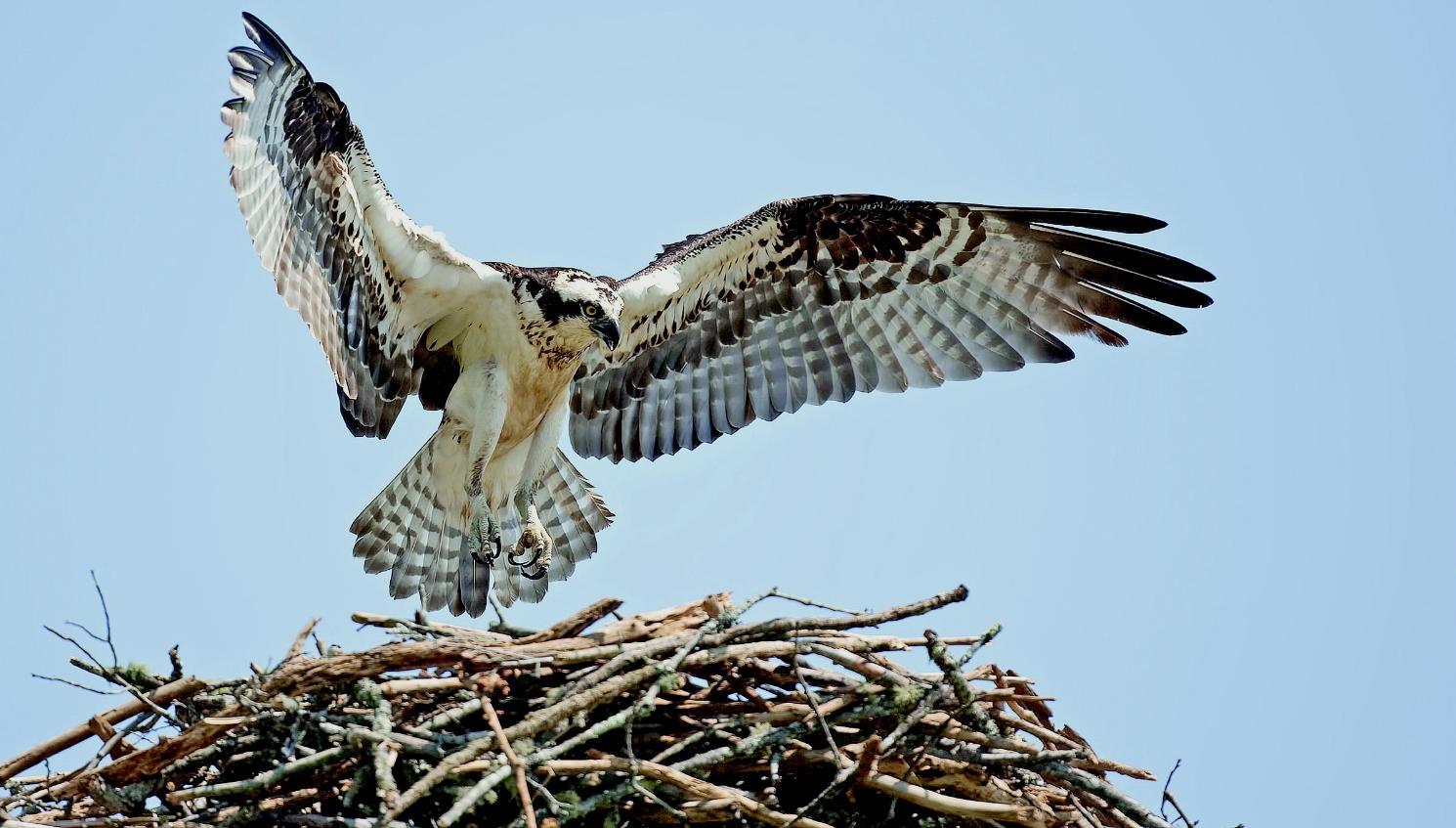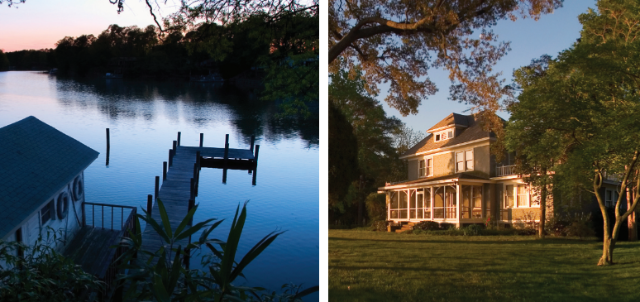"So far in my study, it looks like the Machodoc River, which we are on, has a population of 100 adult ospreys and approximately 8-10 bald eagles, with two speckled eagles and possibly 8-10 young chicks, also 50-100 osprey chicks. I have officially kayaked every bit of this entire river system, and I would highly recommend grabbing a kayak and going to explore if you’re here!”
Russell Reed ’16 was in the midst of an undergraduate research project he described as “life-changing” when he wrote these words in the Hull Springs camp house guest book in the summer of 2014. Russell spent two summers at Hull Springs studying the flight patterns of birds that come to the Northern Neck and Chesapeake Bay area to breed and raise their offspring.
Spotting fuzzy-headed osprey chicks in a huge nest of interwoven branches is just one of many moments of wonder that Longwood student researchers have experienced over the years at Hull Springs. For me, now almost five years into my job as executive director, just as many moments have occurred while meeting with longtime supporters of the Hull Springs mission or talking with students who have been bitten by the “Hull Springs bug” and are searching for reasons to visit again and again. For all of us, time spent at this gem of a property in Westmoreland County has been life-changing.
When Mary Farley Ames Lee ’38 bequeathed the property to Longwood in 2000, she gave Longwood a true treasure. Hull Springs’ natural assets include 400 acres of pine, hardwood, bottomland and wetland hardwoods; 8,400 feet of primarily undisturbed shoreline; and more than 150 acres of wetlands.
For many years, “the farm” was seen as a diamond in the rough. The bequest came with a modest endowment that was stretched thin with 11 structures and 662 acres to maintain. But even unpolished— and actually because of its raw state—Hull Springs has a sparkle that comes from being situated between two tidal tributaries to the Potomac River, with vital habitats for the Chesapeake Bay watershed.
Put simply, it offers our students and faculty an unrivaled setting for research and inspiration. Currently projects are under way to monitor and improve water quality and biodiversity in the area. These projects provide much-needed scientific research on the effects that land-use changes have on the diversity and abundance of plant and animal life, as well as nutrient runoff to coastal waters.
This coming summer, one of Longwood’s first Brock Experiences courses will be set, in part, at Hull Springs. These are courses that allow students to explore issues vital to citizens in our democracy—issues including the use of the Chesapeake Bay, the largest estuary in the United States and one of the most vital bodies of water in the world, and its waterways.
Hull Springs serves its local community, as well. A partnership with the Westmoreland County Public Schools has led to a two-week summer day camp designed for rising fourth through sixth-graders that offers hands-on environmental education and provides related professional development for Longwood’s future educators, who work alongside certified teachers from Westmoreland.
And there’s more to come.
I have been fortunate to work with many loyal supporters of Hull Springs, men and women who understand the unrealized potential of the place and have worked to develop a strategic vision. Their work has now reached a turning point. We are completing a feasibility study for new housing, labs and teaching spaces, made possible through the expansion of the sewer line to the property and the sale of credits from the wetland restoration project. Once completed, new facilities will expand the use of the property to include larger groups of Longwood students for generations to come.
It is my hope that all Longwood students will experience the power of place and the unique learning environment that is Hull Springs, much as Russell Reed did in 2015, when he wrote, “I am thankful to have been allowed the opportunity to use this place for another summer to study the beautiful raptors that reside here. I will hopefully be back in a few weeks to finish my work and leave a small gift of my research in return.”
About the Author

Sherry Swinson ’77 earned a degree in English from Longwood and served under two governors on the board of the Virginia Department of Conservation and Recreation.




Leave a Comment